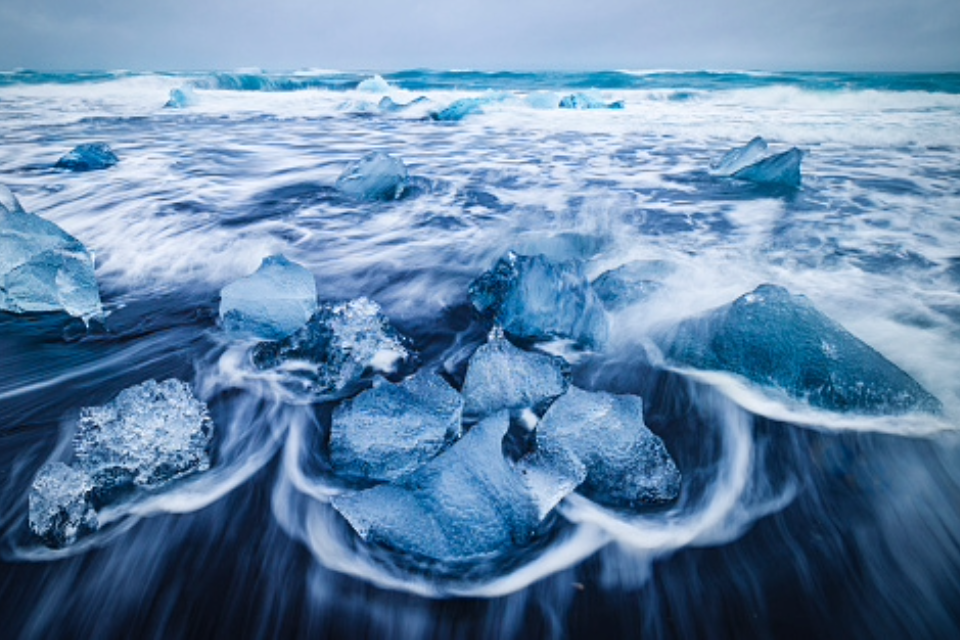The University of Liverpool has contributed to a major new international publication, coordinated by the UK National Commission for UNESCO, which reveals how British-led research is helping the world understand, and respond to, one of the most visible frontlines of climate change.
The launch of the publication, Glaciers and Ice Sheets in a Warming World: Impacts and Outcomes, coincides with the opening day of COP30 (UNFCCC) in Belém, Brazil, and the United Nations’ 2025 International Year of Glaciers’ Preservation (IYGP 2025), led by UNESCO and the World Meteorological Organization.
Edited by Professor David J. Drewry, former Director of the British Antarctic Survey and Vice-Chair and Director for Natural Sciences at the UKNC, Glaciers and Ice Sheets in a Warming World: Impacts and Outcomes, includes contributions from leading British scientists who work in partnership with international teams in glacier regions from the Andes and Himalayas to the Arctic and Antarctic.
It draws on decades of satellite observations, field expeditions, and climate modelling, painting a vivid picture of a rapidly changing planet. Glaciers are reshaping landscapes, threatening water supplies, and intensifying hazards from floods to sea-level rise. Yet the publication also demonstrates how UK scientists are pioneering new methods to monitor, model, and adapt to these changes, providing decision-makers with the evidence needed to safeguard the communities and ecosystems that depend on ice.
James Lea, a Professor of Glaciology and a UKRI Future Leaders Fellow in the University’s Department of Geography and Planning, authored the chapter ‘From ice sheet to ocean: local to global impacts of Arctic iceberg hazards’, which explores how rapidly evolving iceberg risks in the Arctic can have far reaching impacts.
He said: “As the Arctic becomes an increasingly busy and globally connected place, rapidly changing iceberg risk in these waters cannot be ignored. Everything from small boats to container ships and tourist cruise liners with several thousand board need to understand and mitigate the risks posed by iceberg strikes in a region where search and rescue response is extremely limited.”
“Localised tsunamis caused by iceberg capsize and erosion of coastlines as they grind against the coastline also pose major hazards to Arctic communities, while iceberg melt in the open ocean could contribute to changes in weather and climate across the North Atlantic.”
“The impacts of these imposing leftovers of glacier retreat are simultaneously both local and global.”
The report finds that since 2000, glaciers worldwide have lost more than 6,500 billion tonnes of ice, contributing roughly one-third of current sea-level rise and reducing the availability of water to countless mountain communities. The loss rate has accelerated by more than a third in the past decade, underscoring the urgency of limiting global warming to 1.5 °C.
About the International Year of Glaciers’ Preservation
Adopted by the UN General Assembly, the 2025 International Year of Glaciers’ Preservation. aims to raise global awareness of glaciers’ critical role in ecosystems, economies and societies. UNESCO and the WMO are coordinating scientific and policy initiatives throughout 2025, culminating each year on World Day for Glaciers (21 March).
Researchers from the University of Liverpool are part of this global effort, reaffirming the UK’s leadership in climate and cryosphere research and its commitment to UNESCO’s mission to advance knowledge and sustainability worldwide.
The report also included contributions from the British Antarctic Survey and the Universities of Birmingham, Bristol, Durham, Edinburgh, Imperial College London, Newcastle, Sheffield.
Find out more here.
